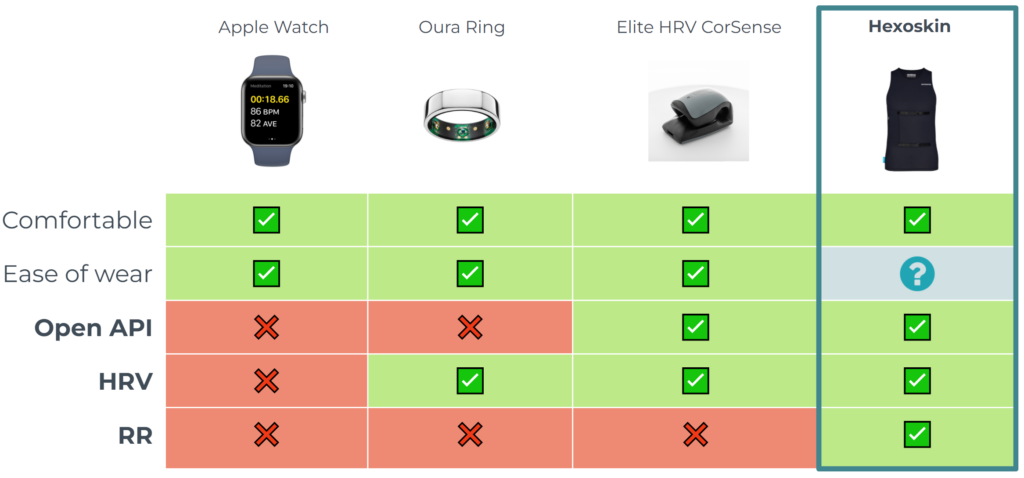Halves Presentation and Reflection
Our halves presentation was on Monday morning and, as a team, we think it went over acceptably. We spent a lot of time over the weekend practicing and adding notes, so we were relatively confident in our delivery. From a production standpoint, how the team went about creating and iterating our presentation deck as a group felt clunky. For finals, we’ve agreed to try a new approach where we divvy up the presentation outline so everyone has very specific roles in the deck’s creation. This will hopefully minimize the heavy amount of in-person group collaboration time that we needed for halves deck. Faculty feedback as given in our instructor meeting could be broken in up to roughly three categories: Technology, Project Focus, and Iteration.
Technology: There was a lot of frustration with our team moving away from the Apple Watch. This is something that we can agree with the faculty on. It has been disappointing for us to move on from the Apple Watch, but we also feel we did not showcase our detailed search into other sensors (including items like the FitBit) as well as we could in our presentation. There was also some confusion about what exactly a Hexoskin shirt is, although the inclusion of the chart below was helpful in clarifying why we chose it.

Project Focus: There was some confusion regarding the role of Equa as a collaborator (rather than client or subject matter expert) and the team’s defined pipeline. This confusion probably stems from our own questions we are still trying to answer about our project. A major topic of discussion on our team is “What does success look like?” Since divorcing our project from the Apple Watch, we have spent a fair amount of time grappling with this question. Is success just building an environment for Equa’s audio content? Is it a technologically successful implementation of biofeedback? Is it a meditatively successful implementation of biofeedback? We have a lot to chew on with these questions, but in our meetings after halves, it does feel like we are getting closer to being able to answer them.
Iteration: A lot of the criticism of our project design has been in lack of iteration and playtesting. After halves, we spent some time discussing the roadblocks that have been making it difficult for us to iterate. Some of this was due to having to deal with finding and implementing a new sensor, but some of it was from a sort of “decision paralysis” where we felt like we had so many options we could try so we were not making the hard choices regarding what we are trying. Over the course of the week, we’ve finally begun making more decisions regarding what we want implemented in our environment.
Environment Building
Outside of halves, Constanza has been building out a chart for biofeedback indicators with some informational highlights about each indicator and reference images for the ones she thinks are most plausible. Faris began working on some cattail plants as a second environmental biofeedback indicator. He also began integrating some prerecorded respiration data into the flower indicators we already have. Lauren made some changes from some of the more explicit art feedback from our halves presentation.

Biometrics and Integration
Zibo has spent the week figuring out how the Hexoskin data collection works and how we can connect it to our app. The current broad system architecture is not much different than the Apple Watch, but it still requires developing a system that filters out some of the respiration data provided by the Hexoskin that we don’t need. He began building our own Bluetooth sample app to streamline getting data from the Hexoskin shirt to our application without using the Hexoskin mobile app.
